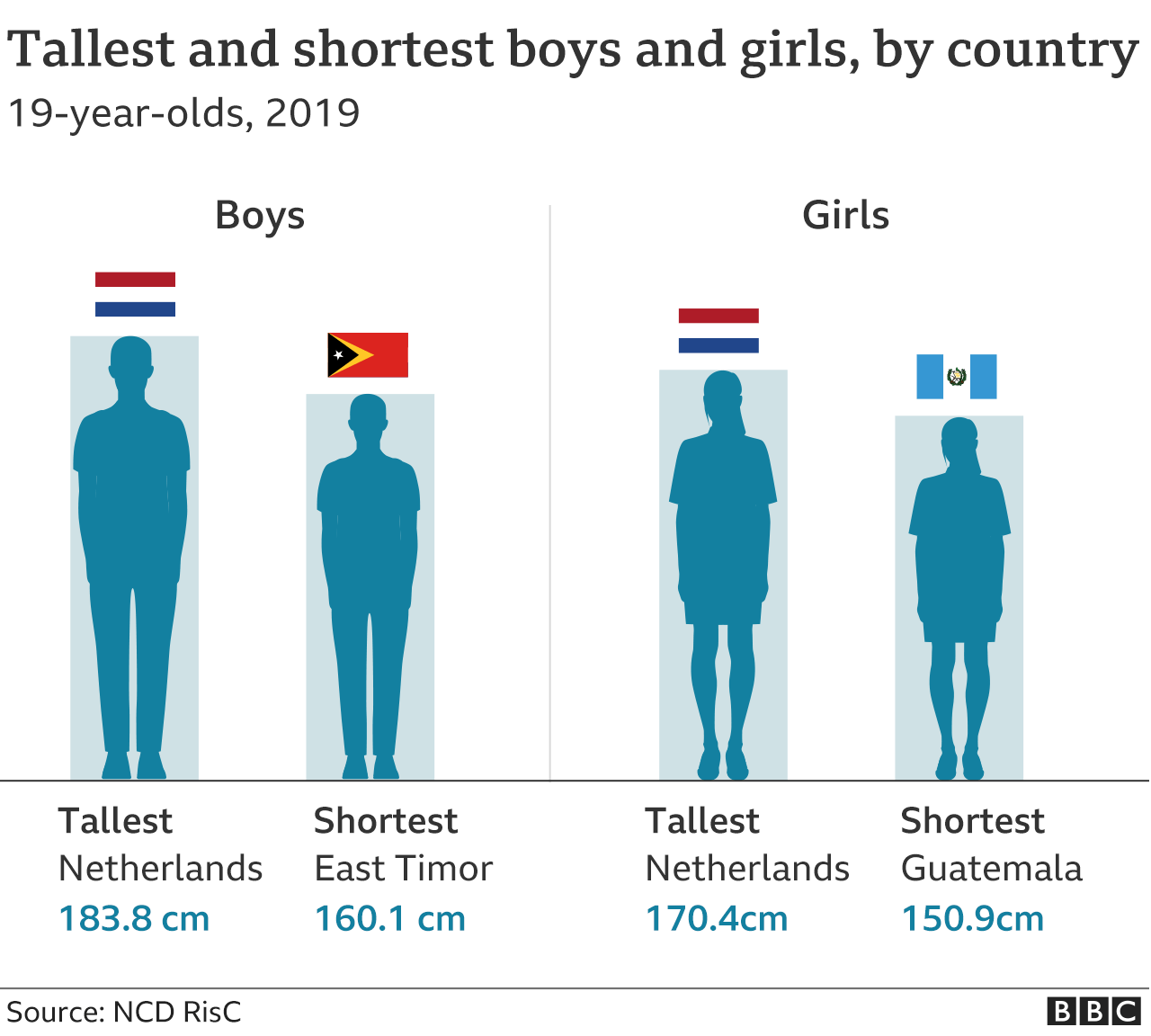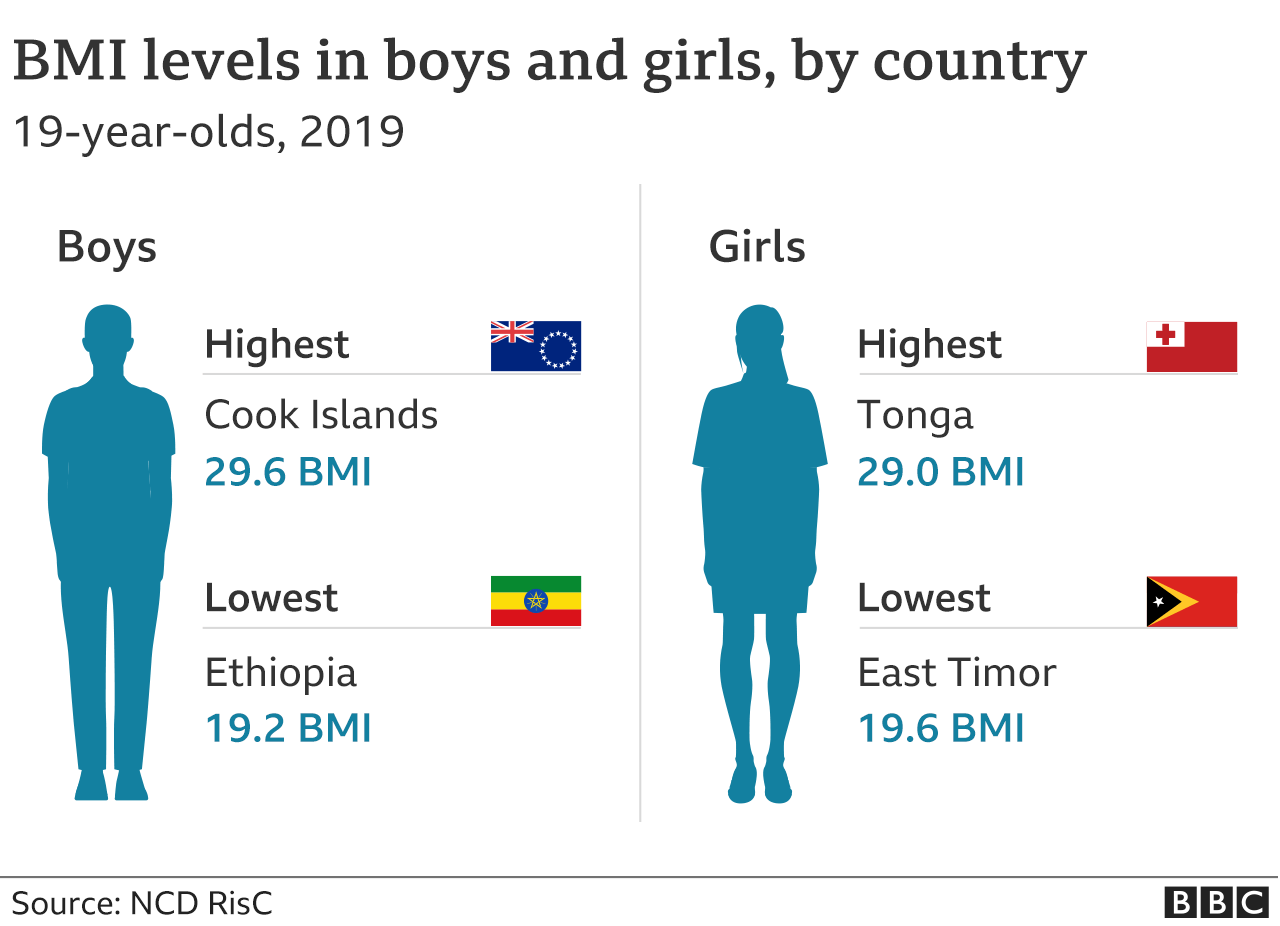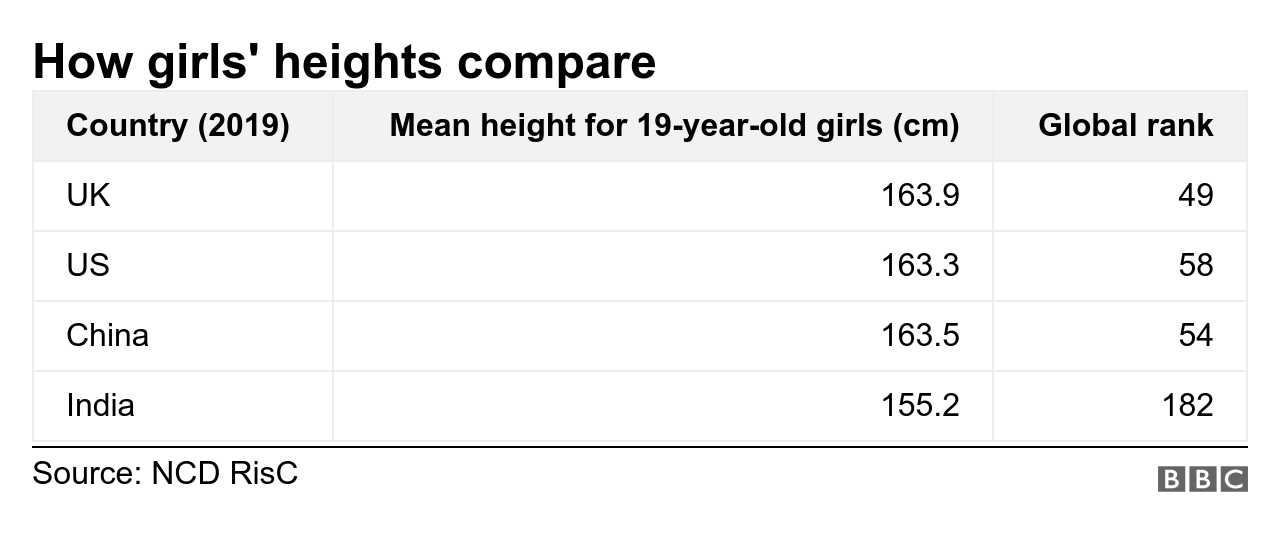Poor diet: Children 20cm shorter as a result, analysis says
- Published
- comments

Poor diets for school-age children may contribute to an average height gap of 20cm (7.9in) between the tallest and shortest nations, an analysis suggests.
It reports that in 2019 the tallest 19-year-old boys lived in the Netherlands (183.8cm or 6ft) and the shortest lived in Timor Leste (160.1cm or 5ft 3in).
Meanwhile the UK's global height ranking fell, with 19-year-old boys being 39th tallest in 2019 (1.78m or 5ft 10in) from 28th tallest in 1985.
The study appears in The Lancet, external.

Researchers say tracking changes in the height and weight of children across the world and over time is important because they can reflect the quality of nutrition available, and how healthy environments are for young people.
The team analysed data from more than 65 million children and adolescents aged 5 to 19 years from more than 2000 studies between 1985 and 2019.
They found that in 2019, on average, children and teenagers in north-western and central Europe (eg those in the Netherlands and Montenegro) were the tallest in the world.
Meanwhile, the 19-year-olds who were on average the shortest lived in South and South-East Asia, Latin America and East Africa.

East Timor is also known as Timor Leste
The analysis suggests that in 2019:
On average, 19-year-old boys in Laos were the same height (162.8cm or 5ft 4in) as 13-year old boys in the Netherlands.
At 19 years old, girls in Guatemala, Bangladesh, Nepal and Timor Leste were the same average height as 11-year-old Dutch girls (about 152cm or 5ft).
In the UK, 19-year-old boys had an average height of 178.2cm (5ft 10in), and girls 163.9cm (5ft 5in).
The largest improvements in the average height for children over the last 35 years were seen in China and South Korea.
But in many countries in sub-Saharan Africa, average heights remained unchanged or reduced since 1985.
Healthy weight gains
The study also looked at children's BMI, a measure that helps indicate whether a person is a healthy weight for their height.
Researchers found older teenagers with the largest BMI lived in the Pacific Islands, Middle East, USA and New Zealand.
Meanwhile 19-year-olds with the lowest BMI lived in South Asian countries such as India and Bangladesh.
The researchers estimate broadly that the difference between countries with the lowest and highest BMIs in the study was equivalent to about 25kg (55lb).

In some countries children reached a healthy BMI at the age of five, but were likely to become overweight by the time they were 19.
While researchers acknowledge that genetics play an important part in individual children's height and weight, they say when it comes to the health of entire populations, nutrition and the environment are key.
They also argue that global nutrition policies overwhelmingly focus on under-fives, but suggest their study shows more attention needs to be paid to the growth patterns of older children.

Free school meals
Dr Andrea Rodriguez Martinez from Imperial College London, one of the lead researchers, said healthy weights and heights in childhood and adolescence have lifelong benefits for people's wellbeing.
She said: "Our findings should motivate policies that increase the availability and reduce the cost of nutritious foods, as this will help children grow taller without gaining excess weight for their height.
"These initiatives include food vouchers towards nutritious foods for low-income families, and free healthy school meals."
Meanwhile, Prof Alan Dangour, from the London School of Hygiene and Tropical Medicine, said it was a unique and powerful analysis.
He added: "For the first time, this global analysis has focused on the growth of school-aged children and adolescents, and identifies that governments around the world are not doing enough to ensure that children enter adulthood in good health."
- Published22 November 2019

- Published20 June 2012
